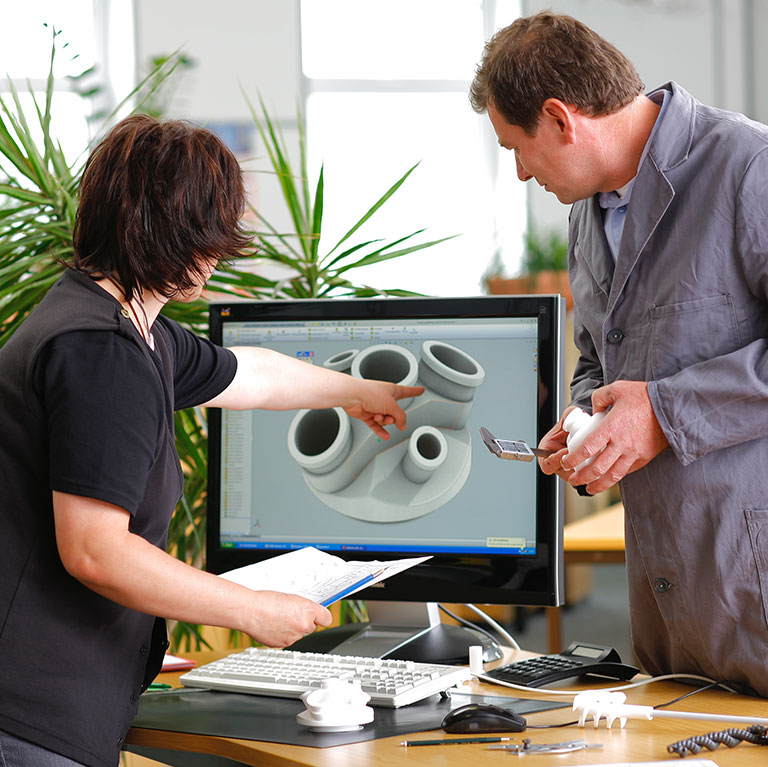Build-up and function of BOLA Temperature Probes
Two different sensors are used for BOLA Temperature Probes.
BOLA Temperature Probes PT 100 and PT 1000 are resistance thermometers which measure temperature correlated to platinum‘s changing electrical resistance under temperature influence with a deposited table of values.
BOLA Temperature Probes Type K are thermocouples which measure temperature with the help of changing voltage inside the sensor under temperature influence.
The sensors of all BOLA Temperature Probes, PT 100, PT 1000 and Type K are located at the end of a PTFE-encapsulated stainless steel tube (material code: 1.4571).
The stainless steel tube provides certain rigidity, but can be bent to the requested form by hand, so that the sensor can be oriented to the optimum measuring point. For BOLA Temperatures Probes PT 100 and PT 1000, connection to the measuring device is made either with a socket or plug type Lemo® size 1 or by connecting directly the strands of the cable to the device.
For BOLA Temperature Probes Type K, connection to the measuring device is either made by using the SMP-connector or by connecting directly the strands to the device.
The cable itself is also encapsulated with PFA and connected tightly to the temperature probe.
Advantages of BOLA Temperature Probes
Reduction of response time
Temperature Probes PT 100 and PT 1000 have tapered tips which reduce the response time considerably.
Chemical resistance and metal-free
The PTFE encapsulation provides an almost universal chemical resistance. All parts which are exposed to the medium do not contain any metals.
Safe to handle
Due to the collar ring at its end, the probe cannot fall into the medium.
High accuracy of measurement
The four-wire system of the PT 100 probes eliminates nearly completely the influence of the resistivity and the transition resistance (failure: approx. 0,002-0,004 % / Ohm). Normally, a calibration is not necessary. Long connecting cables can be used with the four-wire system.
PT 1000 probes use the two-wire system. At 0 °C, PT 100 probes have a resistance of 100 Ohm whereas PT 1000 probes have a resistance of 1000 Ohm. Due to the high inherent resistance of PT 1000 probes, the measuring result is insignificantly influenced by the resistivity of the measuring line. Thus the measured temperature deviates minimally from the actual temperature even when long connecting cables are used.
Response times of BOLA Temperature Probes
Due to the properties of PTFE, the response times of PTFE-encapsulated temperature probes are longer than the response times of glass or metal probes. We have indicated all corresponding T 50 and T 90 values of our temperature probes.
Plugs and sockets
Our temperature probes are normally supplied with plugs or sockets type LEMO® size 1. Should you need a different LEMO® size, we can offer corresponding adaptors.
We can also supply temperature probes with your specific plug or socket. You can find below the most important dimensions for determination of LEMO® plugs and sockets.

BOLA Temperature Probes made of static dissipative PTFE-EX
Besides Compact Probes with a PTFE-encapsulation, also identical Temperature Probes Compact EX encapsulated with black, static dissipative PTFE-EX are available at BOLA. By adding conductive pigments like soot and electrographitated carbon, the electrically isolating PTFE becomes static dissipative.
The construction and performance data are identical with the known BOLA Temperature Probes.



















